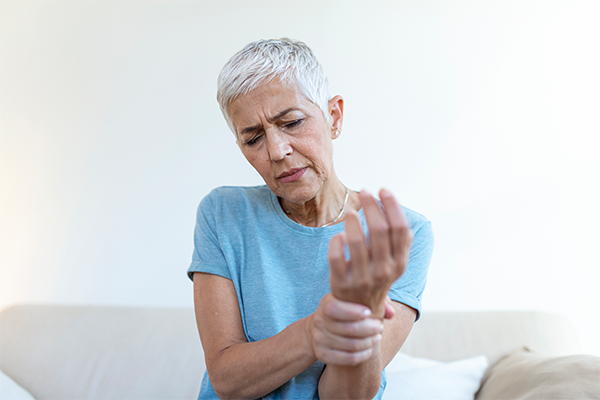Back pain is officially the leading cause of work-related absence in the UK according to the NHS. Despite the fact that back pain is often painful and uncomfortable, it is not usually serious though. There are many factors that can cause your back pain. The main symptom of back pain is, as the name suggests, an ache or pain anywhere in the region of the back, and sometimes all the way down to the buttocks and legs, which is known as sciatica. We have many people, of all ages, visiting our clinics frequently complaining of pain in their back and the adverse symptoms that often come with it. It does appear though to be considerably more commonplace among adults aged between 35 and 55 years.
The human back is composed of a complex structure of components and problems with any of these parts may lead to pain. Pain in the lower back can be linked to either the bony vertebral joints in the lumbar spine, the spongy discs between the vertebrae (which are cartilage-like pads that act as ‘shock absorbers’ in the spine), the ligaments that support the stability of the spine, the spinal cord and nerves or the lower back muscles that are generally sore due to weakness. Another less common cause of lumbar pain, but still important to mention, are disorders of the abdomen and pelvic internal organs which can cause referred pain to the lower back. If a pelvic or abdominal disorder is suspected to be the cause of pain in the back, then referral to a GP is the usual advice. In some cases, however, its cause is never actually found.
Some of the risk factors for back pain
Below are the main factors, which are linked to an increased risk of developing low back pain:
- A sedentary lifestyle and obesity/overweight
- Depression or Anxiety
- A mentally or physically stressful job
- Pregnancy – pregnant women are much more likely to get back pain
- Age – older adults are more susceptible than young adults or children
- Gender – females tend to suffer with back pain more than males
- Smoking
- Strenuous physical exercise or work (especially if not done properly)
What are the main causes of back pain?
The most common causes of lumbar spine pain are sprains and strains, which mainly involve the muscles, ligaments or tendons in the back.
Other structural issues may also result in pain, including:
- A prolapsed disc – which may cause compression on a nerve resulting in lumbar pain or sciatica (a sharp, shooting pain which travels down the buttock and back of the leg).
- Arthritis (degeneration of the spinal joints) – can be a cause of severe low back pain, usually presenting in people from around the age of 50 onwards
- Osteoporosis – a condition of the spinal vertebrae that makes them porous and brittle, which increases the likelihood of fractures.
Back pain can also be initiated by general everyday activities or poor posture. There are so many contributory factors but a few are listed below:
- Bending awkwardly
- Pushing or pulling something awkwardly
- Carrying or lifting something too heavy
- Standing or bending down for extended periods
- Over-stretching
- Sitting in a hunched position for long periods (e.g. on computers)
- Long driving periods with poor seating position
- Coughing/Sneezing
What treatment is best for back pain?
In many instances pain in your back will settle down without any medical intervention by taking it easy and resting. Some people take over the counter paracetamol or anti inflammatories, which can help ease symptoms. Resting can be effective, but usually patients are advised to keep ‘gently mobile’, since too much rest may actually be detrimental. Many people with back pain visit their GP and are prescribed various medications that help to ease the pain. These may include, NSAIDs (Diclofenac, Naproxen), which help reduce inflammation in the tissues, Cocodamol/Tramadol, which are stronger painkillers than OTC paracetamol. It is also becoming more common nowadays for GPs to prescribe tricyclic antidepressants, as they appear to alleviate the symptoms of back pain, irrespective of whether or not the patient has depression.
If the pain doesn’t ease after taking pain relief medication or rest, then it may be worthwhile to seek further help or treatment from an osteopath or physiotherapist.
An osteopath can help relieve back pain with both short and long-term benefits. Treatment can involve techniques including soft-tissue massage, mobilisation techniques, specific joint manipulation, ultrasound therapy and rehabilitative exercises, such as Pilates.
For more information on how our osteopaths may help you, click on the following link: https://thecarltoddclinic.com/services/osteopathy/
A physiotherapist uses very similar approaches to an osteopath. The techniques they apply may vary slightly to those of an osteopath and can include exercise-based rehabilitation, mobilisations, soft tissue massage, acupuncture and electrotherapy. Please click on the link for more about physiotherapy: https://thecarltoddclinic.com/services/physiotherapy/
If any of the above treatment modalities prove to be ineffective on their own, then there are other options that may be carried out including cortisone injections, which are anti-inflammatory drugs, that are injected into the space around the spinal cord to help reduce swelling around the spinal nerve roots. Please bear in mind though that this is not a permanent solution and the effects generally wear off after about 4-6 weeks. Surgery for back pain is usually a last resort and is only really carried out if all other options have failed.
If you are concerned or would like some advice about any back pain that you are suffering from and would like to speak to one of our osteopaths or physiotherapists, then please contact us at one of our clinics.





